The Ministry of Defence has confirmed that the Royal Navy’s Future Air Dominance System (FADS), centred on the planned Type 83 destroyer, remains in its early development stages but is expected to deliver from the mid-2030s.
In a written answer to Ben Obese-Jecty, Conservative MP for Huntingdon, Defence Minister Luke Pollard said: “Future Air Dominance System (FADS) will feature a combination of crewed and uncrewed platforms in a hybrid fleet formation. FADS ‘system of systems’ comprises several major projects and dependencies. These include the next generations of radars, computer Combat Management Systems, new lethal effectors, new communication technologies, plus the uncrewed Type 91 ‘Missile Ship’ and the advanced, minimally (or optionally) crewed Type T83 Combatant. The Type 83 is planned to enter service from the mid-2030s and is assumed to have a 25-year service life.”
Britain wants a missile carrying drone warship – the Type 91
In a separate reply, Pollard confirmed that early planning work is underway. “The Future Air Dominance System’s Strategic Outline Case has been approved. The Programme is currently in its Concept phase as a Government Major Projects Portfolio (GMPP) item. Investment in a UK-sovereign maritime Radar Technology Demonstrator programme has commenced, with a contract placed with BAE Systems in July.”
He added that FADS is viewed as central to the Navy’s future posture and to industrial strategy: “As a critical element of the UK Defence Industrial Strategy, with the potential to deliver a genuine regional spread of growth, FADS remains one of the Navy’s highest priority future capability programmes.”
The Future Air Dominance System is being positioned as the successor to the Type 45 destroyers, with the Type 83 envisaged as the fleet’s most advanced combatant, supported by uncrewed missile ships and next-generation sensors.


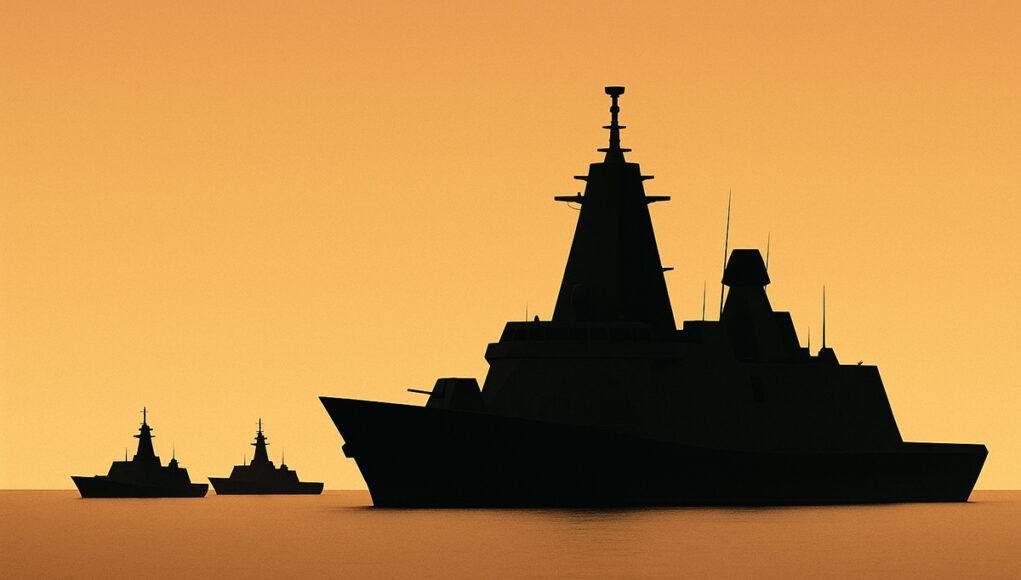

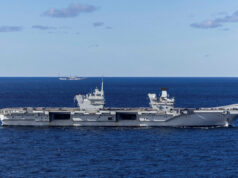
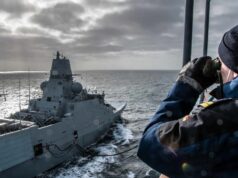
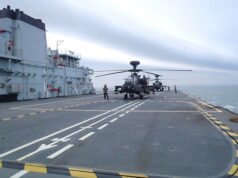

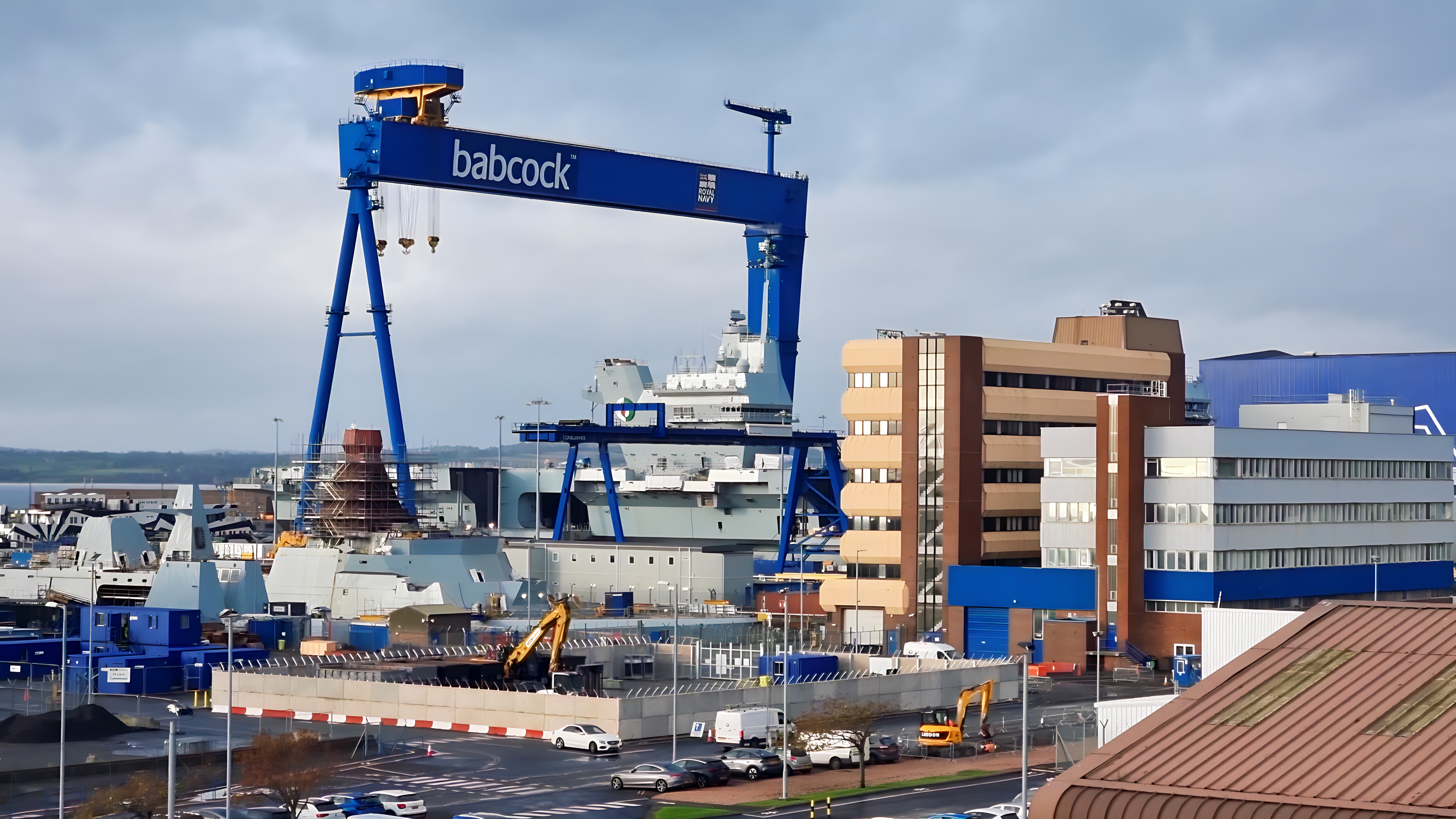


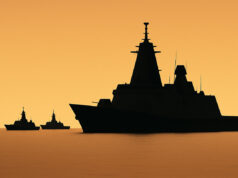
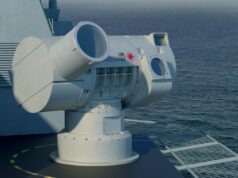

More words, more Jam.
They were asked a question about a future system in parliament and answered it with the current best available information.
What else could you expect but words at this stage? Or do you believe that the government and the MoD should have told the opposition shadow defence minister to mind his own business?
I am so bored with the people on this site making these comments about words and not actions, they are pointless and self destructive for absolutely no purpose.
Discuss what is being proposed, put some effort in, anything but these throw away lines which serve absolutely no function whatsoever.
By all means debate, criticise, praise but address the subject at least to some level especially if you have some knowledge on the subject but to be so dismissive is just depressing and undermines any work being done by George to bring the best and most up-to-date information on future projects.
Please for christ sake build more than 6.
6 T45 destroyers is a joke.
We only really had 5 if we are honest, which probably means we will get 4 plus 2 uncrewed T91’s
Sadly, we don’t learn from past mistakes.
We’ll build 3…
Very likely, but they’ll be 10,000 tonnes cos that’s what’s needed to carry 40 missiles, even though T42s did that on a 1/3 of the tonnage with bigger crews.
I’d bin T83 and keep churning out T31 variants inc an AAW variant like Denmark is going for, would allow for more hull numbers too.
The 640 ton Visbys will carry 36. Just saying.
I would love to see a larger RN buuuuuuttttt
If there had been 12 hypothetical T45s built how would those have been crewed and used in the intervening years?
I fear that the level of STOROBing would have been immense and trying to screw them all back together would have been an even more gargantuan task than PiP etc.
Also which country has more than 6 first rate AAW destoyers other than USA and China? We cannot outbuild economies 10x our size.
I’d far rather we augment our T45s in the short term with an AAW variant of T31 for extra VLS slots controlled by networking.
I suspect more of them would have been used for more general taskings, taking pressure of our ailing and rapidly diminishing frigate force. If we had (say) 10 T45s alongside the 8 T23s still in service, that would be a great place to be compared to where we are now.
How so?
The six that we have are not fully operationally regenerated as yet….
That was in the face of T23 EoL giving everyone a haircut.
The rate of T45 regeneration is largely limited by dockyard capacity – people. More ships just means a longer timeline.
I agree, perhaps the tail should wag the dog, how about we bring 3,000 ton silo ships into service before the T83.
Im a little uneasy about ‘unmanned’, but perhaps a highly automated 20 ish crew and bristling with mk41 silos and bofors 40mm cannon?
Build 12 of them and pair them up with T45/26 or 31.
Thats a lot of bang for the buck….
I think lean manned T31 evolution is more likely than totally unmanned.
Reference Babcock’s on the record, comments about crewing levels on future versions of T31.
With thinking about if Babcock are going to produce an AAW T31 of the Danes anyway more of the integration etc is done.
The days of needing loads of WE/WO to maintain the missiles are a bit over as that is the attraction of the Sea Ceptor, sealed in a tube proposition.
All this talk of mk41s for tomorrow’s ships, why the hell didn’t they put 1-2 mk41s in the T45 upgrade for extra capacity now next to years?
And when are the mk41s happening for the T31s for also now to next 5 years?
Maybe we could instal actual co-operative engagement capability in the T45s?
I think you will find that a work around has been devised using Link16 and other platforms.
That was presumably the purpose of the last SINKEX where a missile was fired from a T23 and controlled in from a Typhoon if I recall correctly.
There are lots of ways of doing this without getting locked into single vendor CEC and a multi £Bn project to modify it to work with the all the existing UK specific CMS and RAF systems. Can you imagine how much a US MIL software vendor would charge for that and how long it would take?
I agree, but theoretically though wouldn’t one of these in charge of like 2/3 missile barges be able to defend a carrier strike group?
My above comment applies to you as well
The drone ship may at first glance look like an off-the-page idea, yet last week we saw China’s small remote vessels, which could be fitted with drones? Remote naval systems are expected to increase in number as the concept is enhanced through AI-driven innovations, leading to the majority of warships being either fully remote or partially manned for damage control.
Serious questions- “The Type 83 is planned to enter service from the mid-2030s”.
If we’re going to be even close to this date, when do we need to start building, and where is the dockyard shipbuilding capacity? With everything going to Type 26 and 31, surely we’re going to need another yard…?
Not necessarily. It’s been reported in the recent piece on Rosyth that Babcock are giving serious consideration to building another assembly hall to hit the projected increase in demand. If FADS and the T83 go ahead Bae will almost certainly be the lead, so you might see the plans for the “frigate factory” in Scotstoun being dusted off and updated. Then there will be just the small matter of training up enough staff.?
Don’t forget the productivity gain of actually having a proper indoor working environment where the winds don’t blow, it never rains and the temperature is moderate! Even a steady 12C in the winter means that every time you touch steel your gloved hands don’t get stupid cold.
Scotland is quite moderate temperature wise but the winds do blow and it definitely rains! When it does get cold it gets proper cold and works will probably stop for days at an end on some project aspects.
Having spent a winter up there I can heartily agree. There is nothing quite like coming under the bridges on the Forth at 02.00, on the focs’le, with the snow going horizontally past you foul weather jacket. Covered construction is the way to go.
Moderate temperature wise is relatively. It’s very humid so is colder than the temperature readings would suggest. Certainly difficult to do intricate work and for things to fill up with snow.
Indeed – nothing a modern HVAC system can’t sort out.
Babcock are also submitting a design for the T83 requirement based on the A140, but stretched and called the A160. Apart from that, Babcock haven’t released any more details. I’ve yet to see an image of the Babcock future design.
We cut steel for the first Type 26 in 2017. That’s 8 years ago and none have been completed yet. The type 83 isn’t even in the design phase yet and they think they will enter service in the mid 2030s? Yea right!
It states deliver, not enter active service. Can’t help thinking the wording is carefully planned, so could cover the scenario that the delivery of the construction contract, or pretty much anything else. Basically giving themselves options. If they are out of government by then they can then blame for new government for failing to deliver on time and if they aren’t then they fall back on it’s in schedule.
That’s taking parsing words to a ridiculous level IMO, but you may be right. Considering that the current fleet is due to be EOL in the mid to late 30’s silly me was thinking that’s when the replacements would be planned for.
It’s polictics. Every word is carefully choosen.
It is possible if someone is on the accelerator pedal.
T45 didn’t take that long to build IRL.
The main thing is maturing the design. There are two hot warship production lines in the UK now and one or auxiliaries.
So building it pretty efficiently isn’t the issue it is getting it past the various gates and then main gate with a contract to build.
At this rate we really will be building frigates/destoyers faster than USN is building them – given the export numbers added to RN numbers.
Mid 2030s? Better start planning a life extension programme for the T45s then.
I’ve been saying that for years. Even an acknowledgement of a change in the OOS dates to 2040s would be welcome. It would be soooo good to have some capability overlap this time, with a few extra sailors to make it happen.
We’ll be lucky to see this by 2040! Mid 30s FFS. The design will need changed 50 times as goalposts are moved, I doubt they’ll have stopped fighting over design changes until at least the mid 2030s.
It’s a bit early days but I wonder if Norway will purchase a couple of Britain’s future AAW destroyers as well? With them purchasing dedicated ASW frigates, in the Type 26, which eschews some of the more advanced anti air systems, I wonder if Norway might model itself on the Royal Navy and adopt dedicated platforms rather than jack of all trade type vessels in the coming years.
More gold plated stuff, planned 6 get 3 . Remember the MoD spinning that 6 type 45 were better than 12 type 42 , forgetting that 6 ships equalled only 2 ships available for operation compared to the 6 when you have 12 .
So 12 * t 42 meant 4 available? The power multiple stays the same, unless you think the older ships had higher availability?
I went by the RN figures for type 42 availability
With all these orders flowing in for Type 26 and Type 31, will there be any build capacity left to build Type 83?
Babcock is growing their production capacity and BAE seems to be restarting plans for the “frigate factory” in Scotstourn. Capacity to build it doesn’t seem to be the issue. The biggest problem is that we just keep on having more pre-concept ideas and nobody seems to know what we even want to build.
If they do that the construction project will likely bottleneck construction. The most efficient idea would be a new purpose built facility from scratch with the 83 dimensions as a minimum and consolidate govan and scotstoun on one new purpose built site then redevelop and sell off either or both to recapitalise
Exactly why they state these ridiculous time scales is stupidity the t45s will be serving well in to the 2040s.
I’m going to be bold and say:
– Type 45s will be in service until close to 2040
– Build 8x Type 83
– Build 12x Type 91
Given how long it takes to build the first in class we need to start construction very soon to meet the mid 2030’s objective. But it’s in concept phase so that isn’t going to happen! Why give out dates the MoD know won’t be achievable?!
T45s have spent so much time in dry dock with refits and fault rectifications that they have plenty of life left in them, far more so than the T23s at the same time in their service life.
CAMM & Aster upgrades, NSM & Laser Defences means they will still be a hugely capable platform for another 20yrs.
Mid 2030s for T83 is completely unrealistic, IMO.
Unless they they go for a modest modification of a T26 or T31, but a completely new ship… yep not a hope.
To condense what the government and article said “Type 83 to replace Type 45”
PRESUMABLY THE “MISSILE SHIP” WILL DEPEND ON THE MOTHER SHIP SO ONLY ONE TARGET FOR THE ENEMY TO HIT ?
Mate, You might live a long way away but there’s no need to SHOUT !
This Is all just Pie in the Sky until something is actually ordered and built, by which time, Drones and UAV’s will probably have gone out of fashion and we’ll see something else come along.
Terminator and Star Trek still have much to give !
Sorry abiyt that…I was touch typing and hadn’t noticed that I was SHOUTING caps..
Or they are fwd positioned assets that are more expendable than T83.
I don’t know what the contact range is so you may well be right.
And who is going to fix the drone ship at sea when its systems fail? Sorry just dont think they are a good place to spend the limited resources available to the RN. A bigger Navy is needed but then the Governement will not allow them to do their job of protecting these islands anyway.
Simples, Huey, Dewy and Louie with backup and support by Dern.
(Anyone under 50 might struggle with that !)
Silent Running. I claim my prize!
I can just about see the benefits of an arsenal ship in a hot war situation. I’m less convinced that they need to be routinely deployed in peacetime.
We have used them before in WW2, with adapted landing craft firing rocket barrages at land targets. They were basic and cheap. Any vessel intended to act alongside an advanced AAW destroyer would have to have long range and high speed, and would be complex and expensive. As would the missile load- 100 could cost close to £200 m, unaffordable to take out cheap drones.
If the concern is running out of AAW missiles to destroy aircraft or more sophisticated anti ship missiles, better to build a destroyer with a bigger capacity
My favourite little robots.
Uncrewed ‘Missile ships’ will not need repairing. I am sure AI will have advanced to the point where a decent ‘Call Taking Assistant’ will be able to diagnose the issue and suggest a repair requiring no hands.
I note that no ‘Systems’ are mentioned that might form a part of the ‘System of Systems’, which I would suggest describes every ship since the days of steam, and before, dependent on your definition of ‘System’.
Not really a very rewarding article beyond the lack of confidence, in a timely solution appearing, it in stills.
Agree that a FoC platform might appear after 2040.
In contrast to the majority of commentors, I think that we’ll likely get at least six of these ships. Drawing from our best available information, it seems that these ships will not be the >10,000 tonne monsters they’ve been painted as by many in the community, and will instead be enlarged variants of our two current classes of frigate – BAE’s Type 26 becomes the Future Air Warfare Command Ship whilst Babcock’s Type 31 becomes the Arrowhead 160. That commonality will reduce the required changes to the shipyards for the construction of the new class.
That, combined with the presence of the missile ships, will probably lead to a destroyer with 72-96 cells, an artillery armament similar to the Type 31, and a couple of DEW, whilst retaining space for a chunky and powerful radar system.
The most recent BAE image actually reminds me much more with the flush sides of T22 than anything else, I really like it! And that vast radar mast…
The more modest size retaining plenty VLS does seem to have become the accepted norm, converging from the early BAE monster and the arsenal ship sketch- not a concept really.
Much more sensible now IMO, to produce more capability from a similar hull in order to maximise build numbers.
Do you mean the render with the sunset colours? If so, I agree entirely.
Now we have CAMM-MR as an option to dual-pack a medium range SAM, we can cut down on the amount of cells required. The Ticonderoga-class cruisers are known to have deployed with around 90 interceptors, roughly 50 of which are the SM-2, taking up 40% of their available VLS cells. Through the CAMM-MR, the RN could get similar combat mass and capability whilst requiring half of the expensive Mk41 cells.
No, I’m talking about the really recent image with the box radar from the Telegraph, in an article about T91. Will link in reply.
CAMM-MR could be revolutionary in terms of cutting down ship cost. A lot of the European AAW ships rely on SM-2, surprisingly few have ESSM, so being able to match the range for half the mk41 is hugely important.
I wonder if we will also see standalone cells as a cheap way to upgrade T31?
Yeah, I’ve just seen your post on the SP forum. Just below mine 🙂
It’s a nice looking ship.
Ha, I’d forgotten you were on there! Thanks for the like 👍
Comparing the two, it looks like they’ve only updated the mast to fit those huge search panels on.
It’s a good looking ship, something about the bridge reminds me of HMS Bristol.
It does indeed, as does the large dome-like radar mast.
Yes, though Bristol’s dome was in front of the bridge!
I think it depends in the end you are not getting a top fight next generation AAW destroyer coming in at less than 10,000 to 15,000 tons…essentially everyone is building them this size for a reason.
But I could see the RN doing something it has done before in spades to keep the weight down and that is highly specialise.. but they would need to go far more specialist than ever before. I would imagine that you can get a Destroyer with next generation radar, power management to support as well as 70-100 missiles, but that’s it everything else apart from a self defence gun set would need to go.. so no sonar, no small ships flight, no 5inch Gun, no mission bays.. Big radars, lots of power generation, DEW, 57mm and 40mms and 70+ SAMs.
But this would be such a specialist that I could not imagine the RN ordering many.. maybe 3 and essentially these would be stapled to CBGs.. they could use a T26 variant for this.. then they could knock out a more general AAW frigate based on the T31 and the CAMM- CAMM MR loadout..
But there ain’t no money! How many more times does it have to be said. That’s why the MOD is all ‘jaw jaw’ and no ‘war war’.
Best guess – some sort of government announcement about this stuff just before the next general election (to try and look decisive), promptly reviewed and overturned by the next government.
Sorry to appear cynical, but tis the truth.
There won’t be any extra money until after the Budget, at the earliest. I think there’s a major procurement review to be published early 2026 detailing all the new spending.
Fingers crossed.
“But there ain’t no money! How many more times does it have to be said…”
Nonsense, Defence Spending reached 5.4% of GNP in early 1985 in the mists of Cold War. We still lived well at that time!
I presume, then, that if there are two hulls involved, that T83 could use the T26 or T31 hull without too much stretching and hacking to fit lots of VLS in. Because a large part of its ‘magazine’ is actually on another hull.
Not sure it is a reason not to design a new hull, but it keeps things ‘safe’ to just keep open lines running…
That’s a dangerous road to go down, as there’s no guarantee that the Type 91 will actually get built. I would guess the RN will need a larger hull to store more missiles, generate more power for energy weapons, and carry heavier radar equipment.
I agree, it’s not something that I’m entirely comfortable with. I can just see the benefit in a chain of thought that utilises a hot line, rather than a re-design, re-tool, re-train, etc.
I’m not an expert, but my understanding is that T26 could be stretched a bit, but isn’t as wide or tall as T45, making mounting a decent AD radar as well as extra VLS more of a challenge in terms of sea keeping and stability. I don’t know if it’s either/or or if the AD radar is problematic regardless.
I would probably prefer a ‘cruiser’ type AD vessel, like the Ticonderoga in some ways, but we’d have to accept that we’d only be getting 6-8 of those- we’d need something with more mass (possible T91 is T31 with a bunch of VLS and CEC?). Using CEC, they could easily use VLS located on other vessels, whether that be T26, T31, or possibly T32 or T91.
I guess it comes down to this distributed warfare concept and finds. Not sure which way they’ll go.
We don’t know what it will be or what it will look like ,crew or no crew…. But it will only last 25 years .well well at least we do have some information .
So, that means three unmanned classes announced…
• Type 91 ‘Missile Ship’
• Type 92 ‘Sloop’ USV
• Type 93 ‘Chariot’ XLUUV
Did anyone catch the T83 change in description it’s now “advanced, minimally (or optionally) crewed Type T83 Combatant” how the hell do you get a large advanced minimally manned or optionally manned AAW destroyer… FFS I hope the RN are not going off on one like they did in the mid 1990s with frigates ..because we know what happened there..money pissed away with a decade of “options” and what did they do after all that bid a traditional ASW frigate and a traditional GP frigate. Everyone else is building big solid AAW Destroyers in the 10,000-15,000 range due to the power needs and complexity + weight of the next generation radars and none of them are going minimum or optionally crewed..because the crew is part of the resilience of the ship and you don’t want your core AAW screen linchpin being out of commission due to lack of damage control etc. But the UK looks like its going down a rabbit hole so we don’t have to actually have a proper level of establishment for the RN.
The reference is for the future air defence system, which in this context is the T83 and the T91 operating together. The T83 will be fully manned, whilst the T91 they are talking about very lean manning or optionally manned. The latest design of the T91 that was shown in this weeks Telegraph, show a corvette sized trimaran hulled vessel. With a helipad (no hangar), a pair of what looks like 40mm Bofors and the forward deck housing a VLS farm. The VLS has what looks like 8 cells, so pretty mediocre. However, the design also shows a bridge, with a mast holding a mechanically rotating radar.
Hi Davy the bit of text says
“ plus the uncrewed Type 91 ‘Missile Ship’ and the advanced, minimally (or optionally) crewed Type T83 Combatant.”
As you can see that is a change and is specifically about the T83, because previous the T83 has always just said minimally crewed.. they have now added a bracket optionally crewed.
I honestly can’t believe that the RN would let a £750M+ warship be uncrewed. There are too many safety implications.
Indeed, I was a bit taken aback, I wonder if it’s one of those misspoken type events.
The design looks like a cross between the Triton and a 👠 . Wish they’d concentrate efforts on getting the vls into T31, T26 and then T83 first. Why not a few more T31 and an extra T26 now while costs are bedded down and is the T91 really needed?
To be honest more and more I’m thinking they should simply keep building T26 and T31.. if the danish T31 variant turns into an AAW version ( which is what they are after ) this could be the opportunity to with minimal investment drive an increase in fleet size, there is no reason why you cannot put a second long range volume search radar like the SMART-L on a T31 and upgrade the Thales NS110.
If you take a look at what BAE and Babcock are offering, they’re both enlarged versions of their frigates rather than clean sheet designs.
The Type 26 becomes BAE’s Future Air Warfare Command Ship and the Type 31 becomes the Arrowhead 160.
Yes they are interesting concepts.. a nice bit of competition driving innovation.
Except we haven’t actually seen Arrowhead 160 yet, or even any indication of its VLS count etc.
Hopefully something turns up later in DSEI, like the FAWCS has?
An Type 26 frigate as a AWCS vessel, would only have a limited potential of the Top Weight to grow. The RN should know better!
Why bother with an ‘arsenal ship’? Which I can’t see as being of any more use than an enlarged magazine on the prime vessel, but with the added complications of logistics, security, maintenance etc. (With the possible exception of the ability to remotely send it into highly contested waters to launch from, but then anyone with a RIB could ruin your best laid plans)
With the old adage of steel is cheep and air is free, put those launchers on the prime
The whole point of them being Type 83 and not Type 46 was that they were to have both ASV, ASW and AAW capability, previously Type 8x, have been cruisers now were long past that name meaning anything with “destroyer” dispalcememts well beyond previous generations of cruiser. I do hope that they build a balanced design though, we don’t have enough ships to assume there will always be another class around to cover the deficiencies of single role vessels
Wasn’t the plan for the proposed Type,83 although being classed as the type 45 replacement be in the tonnage range as that of a Cruiser . I think that it was 9,000tons .Hope it doesn’t go the way of the type 82 ,and only 1 gets built.